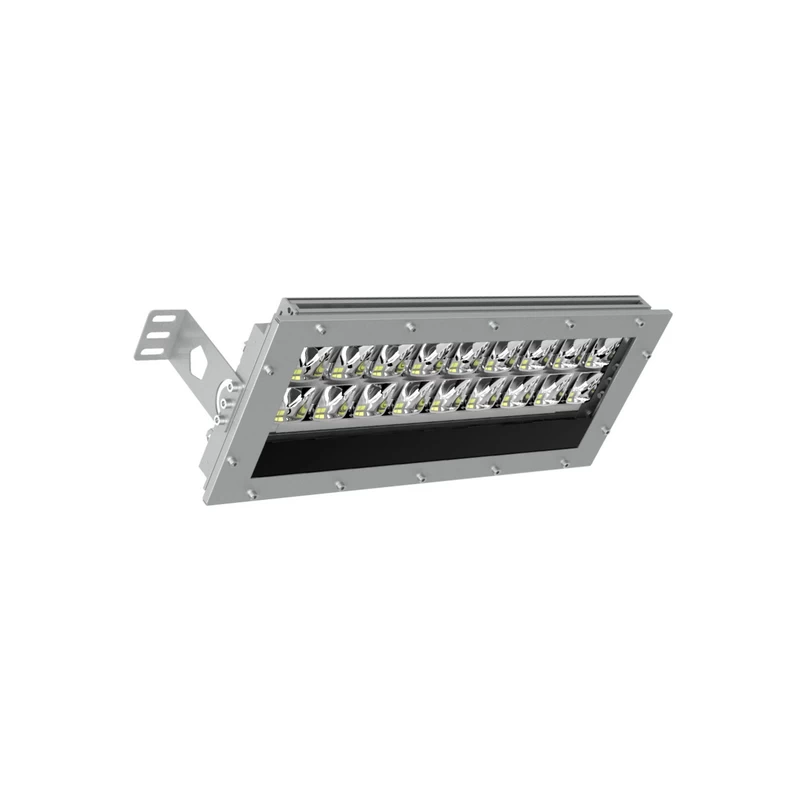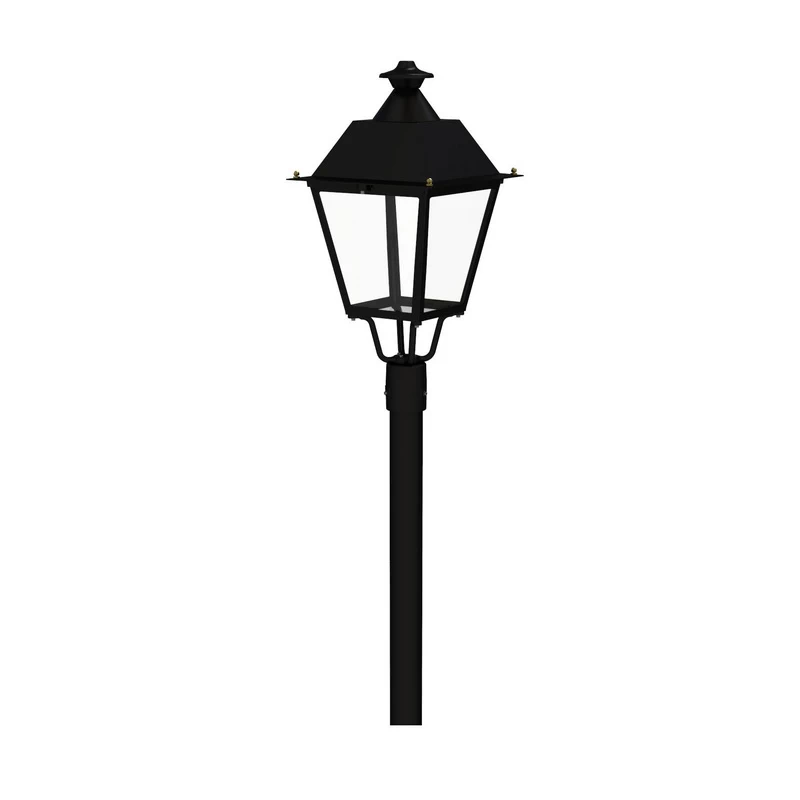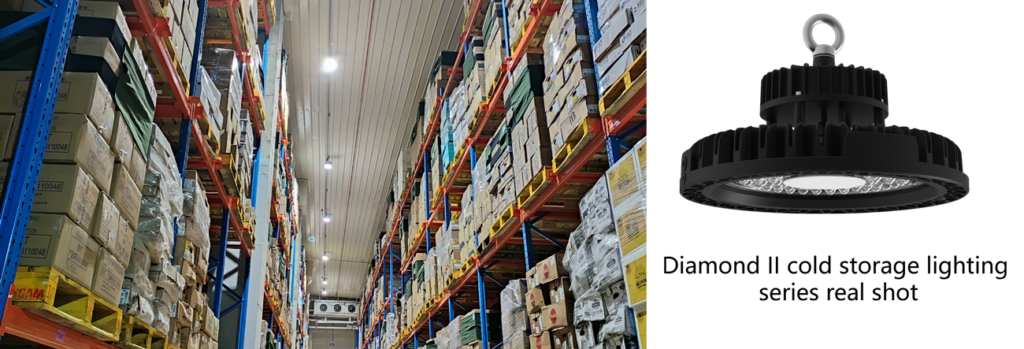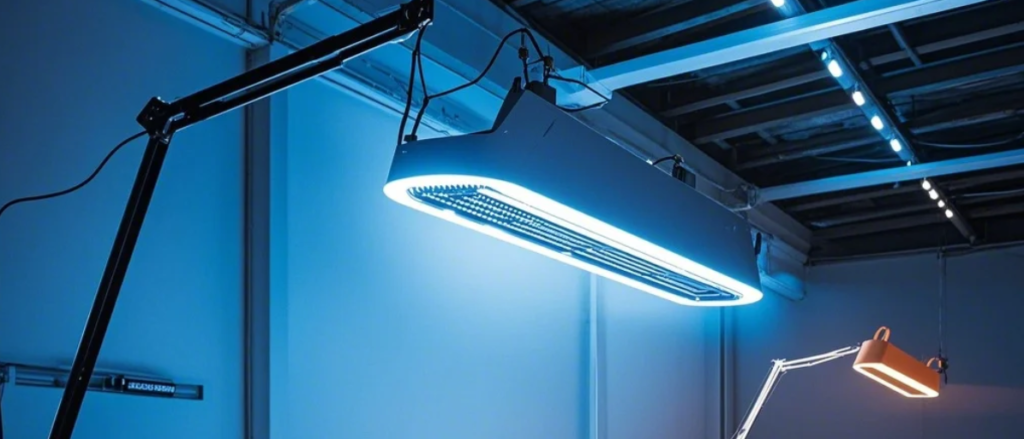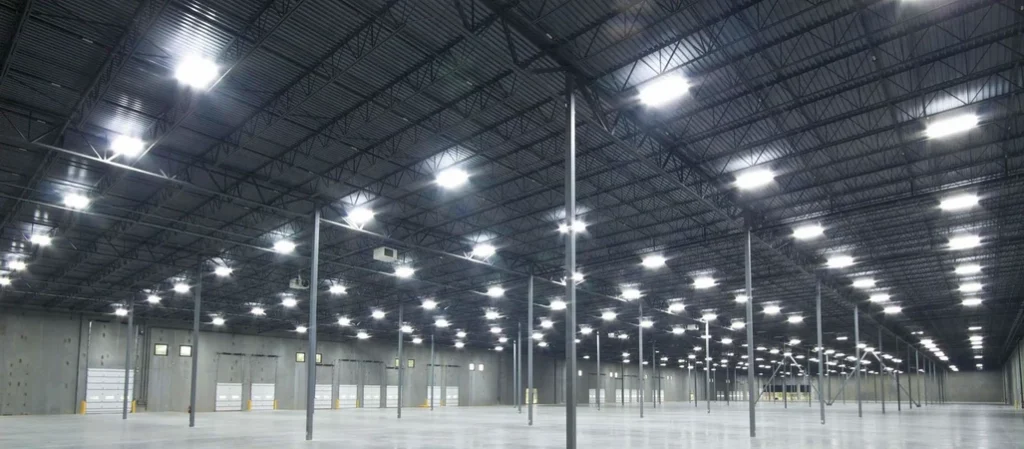目录
切换简介:LED 光色及其重要性
在照明领域,各种类型的 LED 灯让人应接不暇。无论您想为家庭、办公室、工厂或体育场馆照明,选择合适的光色都非常重要。它有助于营造合适的氛围。
日光和亮白有不同的用途和设置。柔白和暖白灯泡可以改变房间的感觉。本指南将帮助您了解这些选项。
有关照明如何影响环境的更多信息、 查看我们关于可见光的文章。
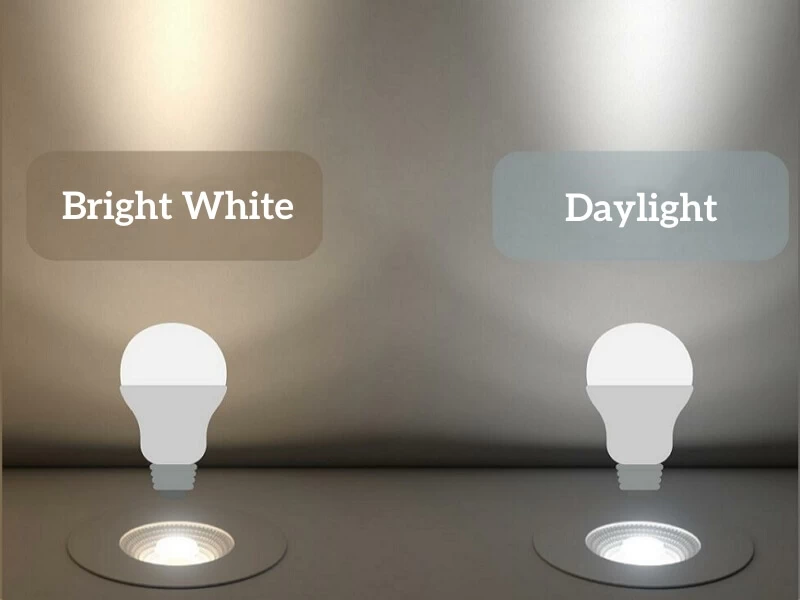
关于瓦特和开尔文的知识
在深入了解不同类型的 LED 灯之前,有必要了解瓦特和开尔文:
瓦特是什么?
瓦特是指灯泡消耗的能量。瓦特数越大,灯泡越亮,耗电量也越大。
相比之下,现代 LED 灯泡的能耗更低。但它们仍能提供高流明输出。在选择合适的灯泡时,考虑瓦数以确保能源效率至关重要。
什么是开尔文?
开尔文测量 LED 灯发出的光的色温。开尔文值越高,产生的光线越冷、越蓝,如日光灯泡。较低的开尔文能产生较暖较柔和的光线,如柔白灯。
灯泡类型:细分
在深入了解不同类型的 LED 灯之前,有必要了解瓦特和开尔文。例如日光、亮白、柔白、冷白、暖白。
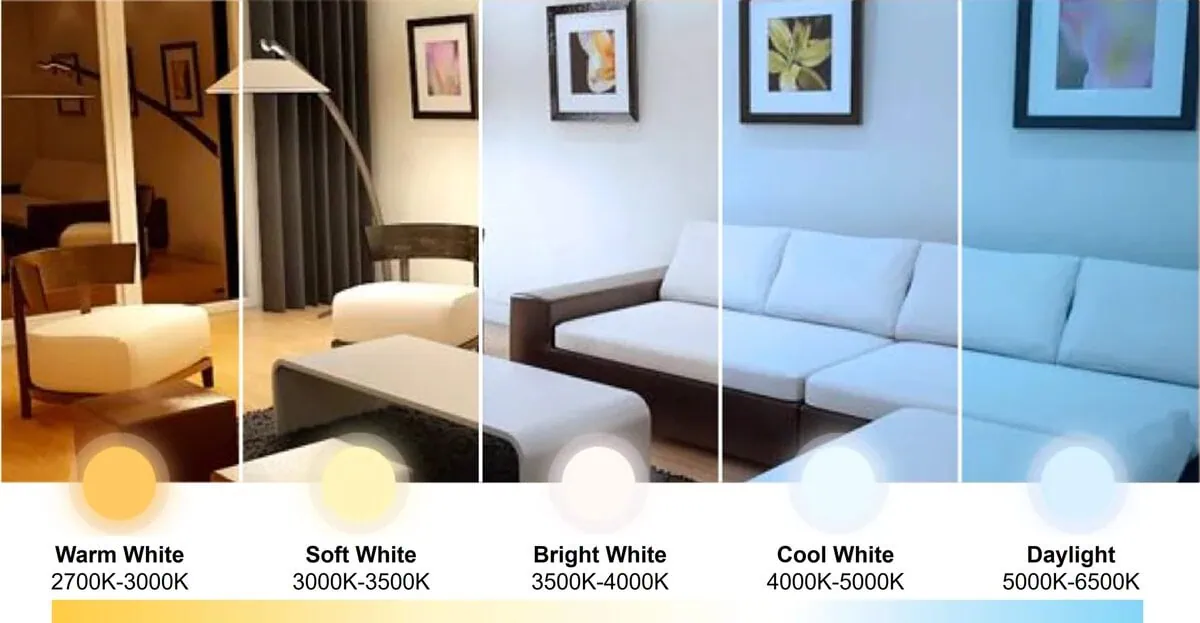
1.亮白灯泡与日光灯泡
亮白灯泡和日光灯泡因其洁白的外观而经常被选用,但它们的用途不同。亮白灯泡适用于需要清晰度的任务,如厨房或办公室。日光灯泡看起来像自然阳光。它们非常适合需要明亮光线的地方,如车间或车库。
在商业应用中,日光灯通常用于陈列室、医院或大型办公室等场所。如果您想了解更多有关如何选择最佳日光灯泡的信息、 访问我们的产品页面.
核心差异:色温
- 日光:色温通常在 5000K 至 6500K 之间。该色温模拟正午的自然光。
- 亮白:色温通常在 3500K 至 4100K 之间。它介于暖白和日光之间。
视觉差异:
- 日光型:色彩还原非常准确,白色清晰、清凉、略带蓝色。它能营造出清晰、警觉、专注、现代、干净和科技的氛围。光线锐利,阴影对比度相对较强。
- 亮白:以纯净、中性、明亮的白色提供出色、自然的色彩再现。它能营造出清新、明亮、高效、平衡和中性的氛围。它比暖白光更 "精神",比日光更 "友好 "和 "自然"。阴影清晰但不刺眼。
| 浅色 | 视觉特征 | 典型应用 |
|---|---|---|
| 日光 | 冷白光,清晰锐利,类似正午阳光 | 住宅区 厨房柜台、工作台、化妆区 工业 车间、实验室、精密任务、仓库 商业 电子显示屏、诊所、生鲜区 体育 健身房、更衣室、高能见度区域 |
| 亮白色 | 中性白色,干净利落,自然明亮 | 住宅区 浴室、走廊、一般照明 工业 办公室、会议室、走廊 商业 零售店、陈列室、餐厅、诊所 体育 健身区、步行道、健身俱乐部 |
2.嫩白灯泡与暖白灯泡
柔白灯泡发出温暖的黄色灯光,非常适合营造舒适氛围的客厅和卧室。暖白灯泡提供舒适温暖的光线。它们非常适合在餐厅或休息室营造轻松的氛围。
核心差异:色温
- 柔和白光:2700K - 3000K,模仿传统白炽灯/烛光的温暖色调。
- 暖白:3000K - 3500K,模拟卤素灯/日出日落的温暖光线。
视觉差异:
- 柔白:明显的橙色/琥珀色色调,营造出更 "黄 "的光线。它更丰富、更悠闲,能营造出强烈的休息和私密感。
- 暖白较柔和的黄白色调,比软白略白。温暖、舒适、友好、自然,略带活力。
| 浅色 | 视觉特征 | 典型应用 |
|---|---|---|
| 柔白 | 暖黄色调,可能略有下降住宅区 主卧室照明、深夜客厅环境照明以及餐厅的烛光晚餐照明。 商业 西餐厅、酒吧、咖啡厅、客房和走廊 | |
| 暖白色 | 物体色彩显得更加自然和温暖,细节比软白略清晰,显色性一般略好。 | 住宅区 起居室主照明、餐厅主照明、门廊照明 商业 餐厅、咖啡厅、面包房、大堂休息室、茶水间 |

3.冷白与亮白
冷白光和亮白光是两种容易混淆的中性至冷白光。以下是它们的核心区别、视觉区分以及如何选择:
核心差异:色温
- 冷白光:4000K - 5000K,代表高效、平静、现代、科技和清洁。
- 亮白:3500K - 4100K,代表明亮、清新、高效、平衡和自然。
视觉差异:
- 冷白色:冷白色偏蓝,可能会给物体带来轻微的冷色调。它能营造出更加理性和严肃的氛围。
- 亮白:纯净的中性白,没有明显的冷暖色调,使物体呈现出最自然的平衡状态。
主要考虑因素:
- 想要平静、高效、技术先进和超高清?选择冷白光(4000K-5000K)。
例如:手术室、实验室和电子工厂。 - 想要明亮、专业、中性和自然的外观?选择亮白(3500K-4100K)。
例如:办公室、教室、零售店和大多数普通商业区。 - 简单提示:
酷白 = 冷静、科技和严肃
亮白 = 中性、多变和自然

4.日光白与柔和白的区别
日光和柔白是色温的两个极端,它们的视觉体验和适用场景截然不同。
- 柔和白光:色温为 2700K-3000K,属于暖黄色。它能营造出温暖、放松、慵懒的氛围,略带朦胧感。适用于休息和放松区域。
- 日光:色温在 5000K-6500K 之间,属于冷白光,类似正午。它能给人一种清爽、振奋甚至微凉的感觉。适用于高度集中的工作区域。
| 类型 | 色温 (K) | 灯光外观 | 典型用途 |
|---|---|---|---|
| 日光 | 5000K - 6500K | 清爽冷峻的白色,略带蓝色调 | 办公室、车间、阅读、任务照明 |
| 柔白 | 2700K - 3000K | 温暖舒适的黄色灯光 | 起居室、卧室、环境照明 |
选择最佳灯泡的关键因素
在选择最适合您需要的灯泡时,有几个因素需要考虑:
- 亮白更亮还是日光更亮?
亮白灯泡和日光灯泡的主要区别在于亮度。日光灯泡通常具有更高的开尔文等级,发出的光更亮,非常适合精细作业。 - 柔白与暖白的区别
这两种灯泡都能营造温暖的氛围。柔白灯泡的光线更柔和,非常适合私密环境。暖白灯泡的光线更明亮,非常适合较大的商业空间。
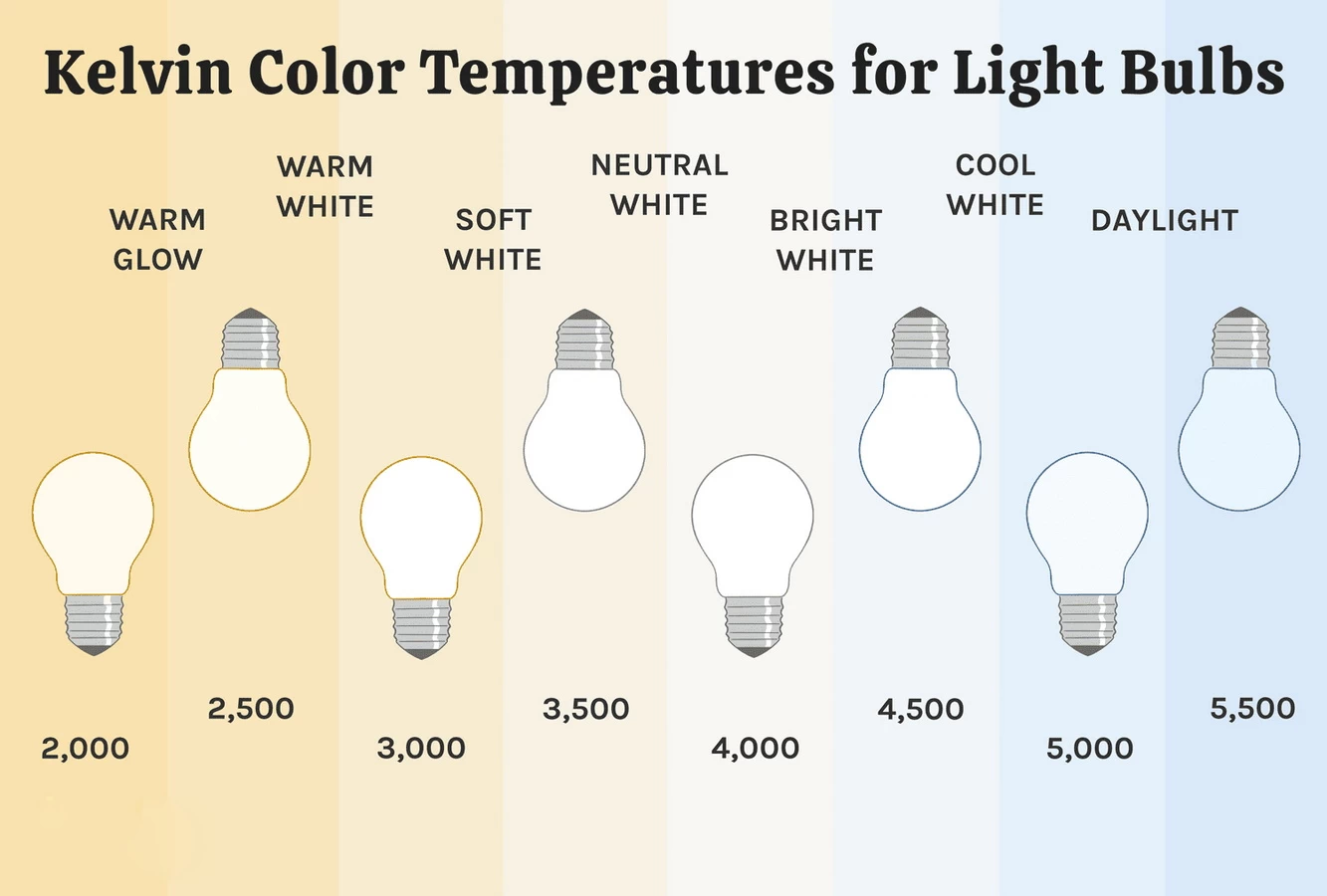
工业、体育和商业应用
照明在不同领域发挥着重要作用:
- 工业应用
在工业环境中,照明必须明亮可靠。日光灯泡是仓库、工厂和生产线的首选。亮白灯泡通常用于需要精确和聚焦的区域。 - 体育应用
对于体育场馆,照明必须确保清晰可见,同时不会造成眼睛疲劳。亮白和日光 LED 因其高光效,通常用于体育场、竞技场和球场。 - 商业应用
在办公室、零售店和陈列室等商业空间,灯光会给人留下第一印象。日光照明能提供清晰的光线,而柔白和暖白灯泡则能营造更温馨的氛围。
有关如何为商业空间选择照明的更多信息、 浏览我们的产品页面。
总结:根据照明需求做出正确选择
选择正确的照明设备需要了解灯泡的开尔文值和瓦数,并考虑其应用。选择合适的灯泡对您的空间非常重要。
对于高能量环境,可考虑使用日光白或亮光白。对于舒适的环境,柔白或暖白效果最佳。合适的灯泡可以大大提高舒适度和功能性。
如果您已准备好改变您的照明,请随时 联系我们我们的专业团队将为您量身定制照明解决方案
人们还会问
LED 照明中的柔白光是什么颜色?
LED 照明中的柔和白光是一种典型的低色暖黄光,带有明显的琥珀色或淡黄色调,类似于传统白炽灯、烛光或夕阳的暖光。它能给人带来温暖、慵懒和放松的感觉。
冷白色和亮白色似乎很相似,我可以随便选一个吗?
虽然冷白色和亮白色在视觉上非常相似,但它们营造的氛围却略有不同。冷白色通常带有蓝色调,非常适合任务照明或工作空间。而亮白的色调往往略微偏暖或偏冷。如果您不追求特定的氛围或效果,可以任选其一,它们之间的差别通常很微妙。
亮白光是最常用的 LED 灯吗?在什么情况下最常用?
是的,亮白色是最常用的 LED 色温之一。其明亮、中性和自然的特质使其成为许多家庭、商业和工业空间的热门选择。
例如,厨房、浴室、书房、街道、零售店、仓库、工厂走廊等等。
LED 照明中的真白和日光有什么区别?
真白:色温 4000K - 4500K,纯中性白,明亮、专业、自然,无眩光。非常适合需要真实色彩和舒适照明的场景。
日光:5000K - 6500K 色温,偏蓝的冷白色。适用于要求高精度和高聚焦的专业领域。


